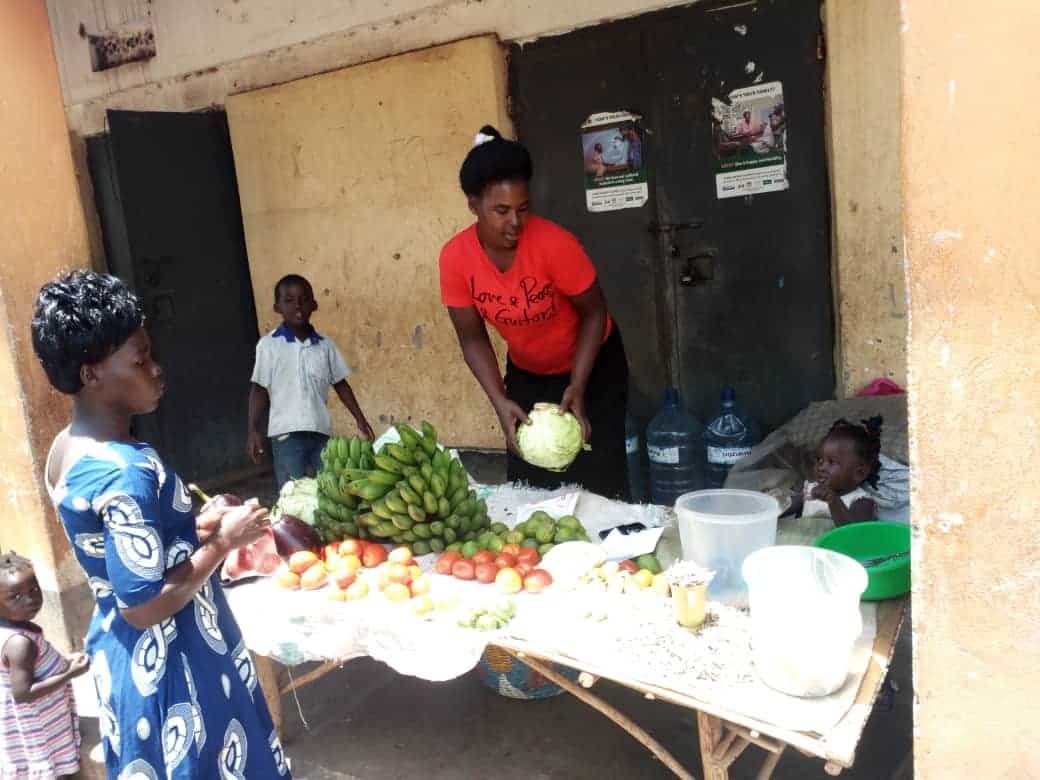Grown in the Back, Sold in the Front: Home gardens improve nutrition in Uganda
November 9th, 2020 | story
Every morning, Stella Akello wakes up and goes to the vegetable garden behind her house. It is small but has a variety of vegetables including boyo and malakwang (local delicacies), okra, kale, cabbage, and eggplant, and doesn’t take long to tend. After she weeds and waters, transplants seedlings, and picks fresh vegetables to make a nutritious meal for her family, Stella readies the stall in front of her house from which she sells surplus vegetables.
Stella, who lives in northern Uganda’s Apac district, is one of the more than 45,000 young women who participated in backyard gardening and nutrition trainings supported by the USAID-funded Regional Health Integration to Enhance Services-North, Lango (RHITES-N, Lango) activity. Using the DREAMS platform, the activity works to improve the nutrition status of adolescent girls and young women and their household members and promotes income-generation through the sale of the surplus vegetables and fruits they produce.
Stella, who is a peer leader of the DREAMS Faith Foundation Group, says these simple gardening methods have benefitted her, her DREAMS group members, and her neighbors. “The garden gives me access to fresh vegetables whenever I need to cook them,” Stella says. “I no longer have to buy from the market. And I have shown my neighbors how to make their own gardens.”

Stella uses the money she makes selling the surplus fruits and vegetables to buy more fresh and nutritious food for her family, including beans, meat, fish, and eggs, and seedlings for her expanding garden. “The teachings on good nutrition practices for mothers and children have been helpful and I have noticed my family is looking healthier because we add a lot of vegetables to our diet, at least every day, to consume a balanced diet,” Stella adds.
The RHITES-N, Lango activity has made great strides in promoting the adoption of these healthy behaviors among its target beneficiaries and communities. To further advocate for good nutrition in the communities served by RHITES-N, Lango, the activity promotes other maternal, infant, young child, and adolescent nutrition practices and behaviors, targeting the first 1,000 days and beyond. More than 1,781 DREAMS groups, 45,335 girls and their families, and 22,201 children under five have benefitted from the project’s nutrition interventions.
Moses Opio, a district nutrition coordination committee member in Apac, lauded RHITES-N, Lango’s nutrition support and looks forward to extending the same interventions to local schools.
I have visited the communities and talked to beneficiaries, and the contribution of the nutrition program, it is visible [through] the DREAMS girls, HIV clients, and young children. Other members of the community have also learned and taken up backyard gardening,” Moses says.
Moses reports that due to the uptake of the nutrition interventions in the community, the district committee has included a budget and plan to roll out food demonstration gardens in schools. These gardens will avail more nutritious meals to students and give them knowledge and skills to garden at home, ultimately creating sustainable nutrition practices to improve community members’ health.
We strive to build lasting relationships to produce better health outcomes for all.